Blog Archives
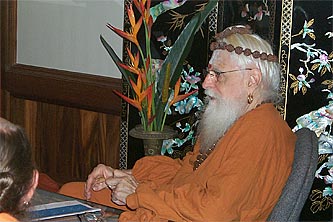
“Goals are generally not used in spiritual life, because the inner mechanism of goal setting is not clearly understood. Dynamic, successful people who go into business for themselves have to have a positive, aggressive plan and keep their lives in a good routine to achieve success. The most prominent among them begin and end each day at a certain time in order to sustain the pressure of the business world. We can and should approach the practice of meditation in a similar way. Like the businessman, we want to succeed in our quest, the only difference being the choice of an inner goal as opposed to the choice of an outer goal, the fulfillment of which entangles us and further externalizes awareness.”
–Gurudeva
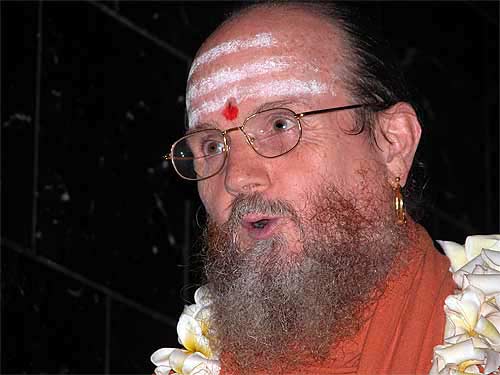
Sun one began as usual with an enlivening homa and Bodhinatha finished the morning off with an excellent talk on the Hindu view of success. We are posting this audio in two parts, one today and one tomorrow.
Bodhinatha’s next travel is to Vancouver and Edmonton, Canada. Please visit his travel page for more information.
 |
 |
 |
 |
 |
 |
||||
Click for most recent TAKA page with an Iraivan Temple progress update. |
||||
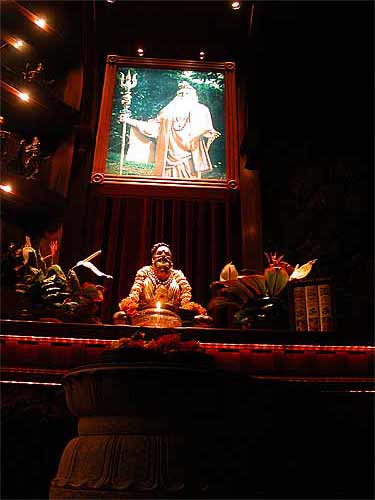
Gurudeva watches over us all from his shrine in the temple.
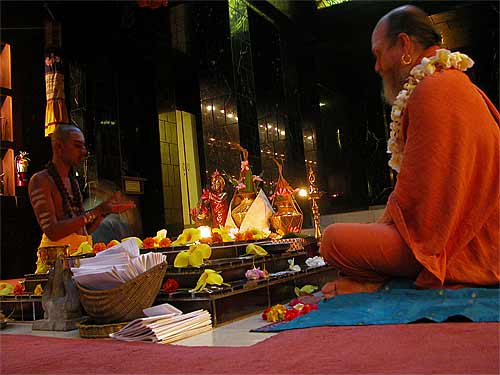
Yogi Mahadevan worshipping Lord Ganesha to begin the homa.

One of the skills of the priest is proper visualization during the puja.

Sacred Kumbhas with Lord Hanuman beside them.
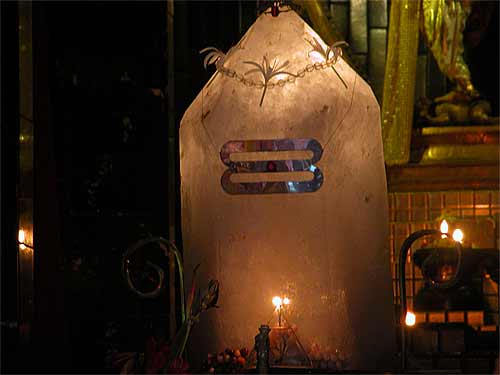
The Maha Sphatika Lingam that will one day reside in Iraivan…
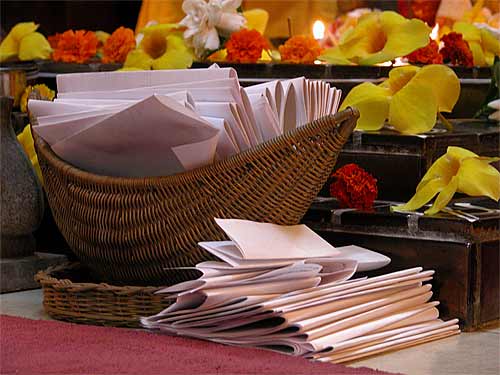
A mountain of prayers to burn today!
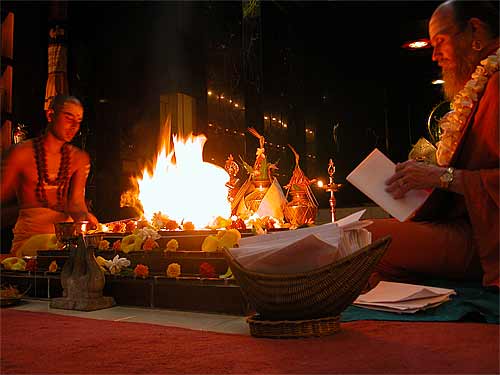
Aum Sivaya, Svaha!

The monks all arrayed on the northeast corner of the temple…. Lord Muruga behind them.
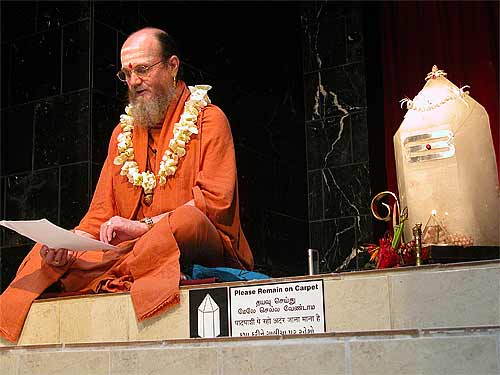
Bodhinatha delivers his Sun one talk… This is an important messages for parents who have strong ambitions for their children.
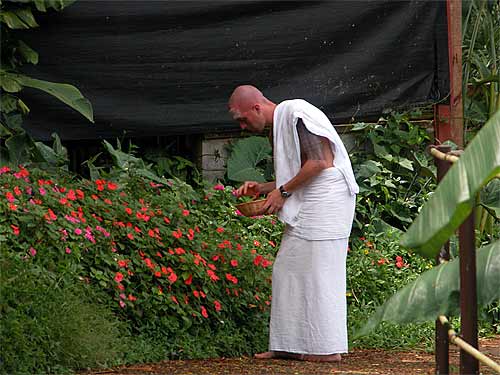
Sadhaka Nilakantha picking flowers to take to the temple for the noon Siva puja.

A chameleon looks on. They are so observant and often stop and stare you right in the eye as if there was a little deva inside who wanted to take a good look at you.
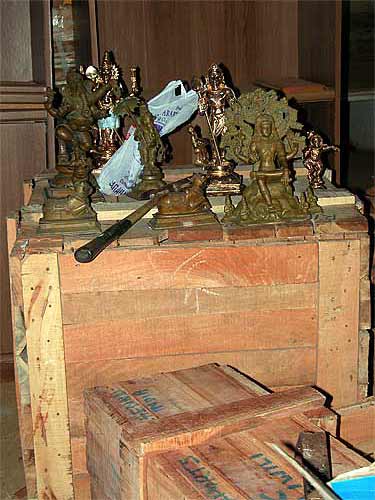
A shipment of fantastic things from India for the Mini-Mela books shop has arrived.

It’s always exciting to have things from the holy land manifest from their shipping crates.
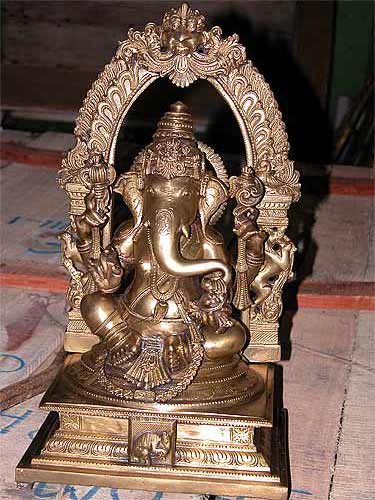
This statue of Ganesha is absolutely exquisite!

Summer is really here and what a beautiful array of plants we have… Our cameraman was inspired to take a nature walk…

The African Tulip tree that lives down the edge of the pali on the way to the river is tall, majestic and in full bloom. But, beware. Every single seed that falls from these trees will sprout…

A bromiliad in flower.

Blue Jade hanging from a tree.


Blue jade up close.

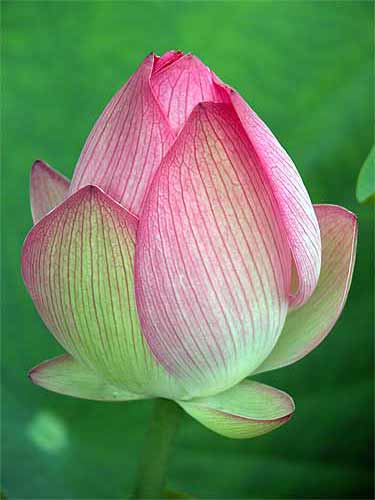
A lotus in one of our pots….
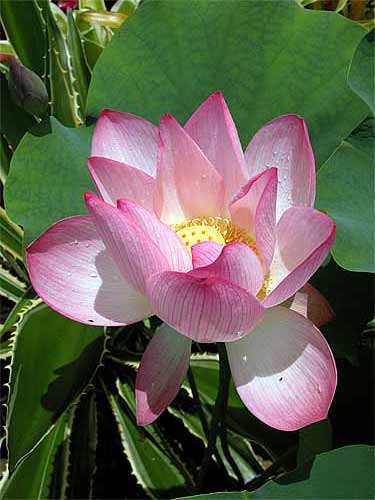
“Chakras look like lotus flowers. There are four petals on the muladhara chakra, which is situated at the base of the spine. These petals unfold one after another as a person’s consciousness emerges upward from jealousy, anger and fear into memory, reason and willpower. “
–Gurudeva
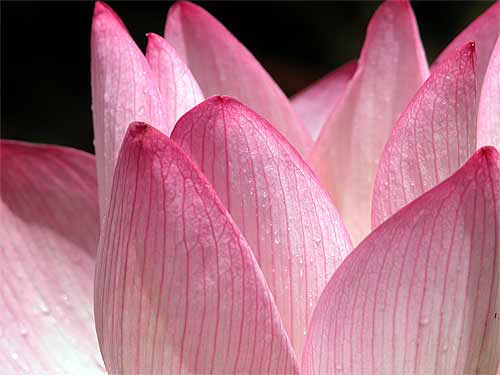


Aum Namasivaya…
Today’s Inspired Talk |
|
|
Title: Success and Happiness in Life, Part 1 Category: Good Conduct Duration: 7 minutes 3 seconds Date Given: June 11, 2004 Date Posted: June_11_2004 Given by: Bodhinatha |
|
And click here for an Index to All Past CyberTalks. Study Gurudeva’s teachings
every day. Visit the Master Course site!
Bodhinatha will be happy to hold “Prasnottara Satsang” — “Questions and Answers” over the telephone with any Hindu religious societies, Hindu youth groups, Radio talk show hosts etc. All you need is a phone with a speaker and an enthusiastic audience. Arrangements may be made in advance by sending email to Sannyasin Saravananathaswami If you are experiencing any problems listening to the audio, please to go our Audio FAQ page and follow the directions there.
| FULL INDEX OF 650+ CYBERTALKS
 |
|
Study Gurudeva’s teachings.
|
transcription begins
Date: May_21_2004
Title: Parents Teaching Hinduism to Children, Part 1
Category: Family
Duration: 9 min. 47 seconds
Date Given: April 29, 2004
Given by: Bodhinatha
Good Morning! Very nice ceremony!
I am working on a little booklet called, ‘Suggestions for Parents on Teaching Hinduism to Their Children’. A few ideas to share. It starts out with an introduction.
Lots of times, I meet Hindu families in the Guru Peedam and particularly the younger ones quite often, with small children and they ask me for advise. “Do you have some advise?” I have about two minutes to give them a lifetime of advise! So if I say something, I usually say, “Try and teach your children Hinduism in a practical way so that it influences their life in very specific ways. It should be so practical that it helps them get better grades in school.”
Of course, it doesn’t cover the gamut of issues in teaching Hinduism to your children. The idea is to just have a number of points with short explanations so that I can hand it to them, “Here, I am glad you asked.”
So if someone asks, here is some advise. That is the idea.
The first advise, you can probably guess what it is. Parents should take the responsibility of being the primary teachers of Hinduism to their children.
It is wonderful that many temples have in place educational programs for the youth that are both effective and popular. However, it is important for parents to have the attitude that these programs supplement but do not replace the need for parents to teach Hinduism to their children in the home. Parents are indeed the first guru. They teach in many different ways, such as, by example, explanation and giving advise and direction. The child’s deepest impressions come from what the parents do and say. Therefore, if the parents can follow a systematic approach in teaching Hinduism to the child as he or she grows up, when the child reaches adulthood this will make the practice of Hinduism much more integral in the child’s life and therefore much less likely to be abandoned.
Next advise. There is no guarantee that when Hindu children reach adulthood and marry, that they will be practicing Hindus. Look around at the younger generation of Hindus and you will find many who have no interest whatsoever in practicing the Hindu religion. One hundred years ago before movies, television and computers in the cities and villages of India and Hindu communities in other countries as well, the Hindu temple was the most interesting place in town. Besides the festivals, there were dramas, dances and musical concerts. The temple was a social center as well. In our modern world, we do have movies, television and computers and many Hindu children would much rather spend their free time enjoying them with their friends rather than being at the temple.
Why is this? It is because Hinduism has not become an integral part of their life. They do not view the practice of Hinduism as important to making their life happier, more religious and more successful. This then is the challenge that all Hindu parents face.
Advise. Establish a shrine in the home.
Hinduism in the family is greatly strengthened by establishing a shrine in the home. The home shrine works best when it is an entire room. This is the ideal. However when that is not possible it should at least be a quiet corner of a room. In the shrine room, offer fruit and flowers or food daily. Visit your shrine before leaving the house and after returning. Worship with heartfelt devotion, clearing the inner channels to God and Gods so their grace flows towards you and your loved ones. Parents can train their younger children to worship in the home shrine before any important event in their life, such as, a major exam in school.
Advise. Have the entire family worship together at the home shrine each morning.
A popular saying in English is, “The family that prays together, stays together.” In Hinduism ideally this refers to all members of the family participating together in the morning worship in the home shrine before breakfast. The children can be trained to always bring an offering of a flower or as least a leaf. The exact routine to follow depends on the religious background of the family. Typically practices include a simple arati or longer puja, singing devotional songs, repeating a mantra, reading scripture and meditation. As the children get older, they can take on greater responsibilities during the morning worship.
A number of Hindus have told us over the years that what kept them a staunch, practicing Hindu, despite exposure in their youth to other religious traditions in educational institutions was the fact that the entire family practiced Hinduism together in the home.
Advise. Have the entire family worship together at a local temple once a week.
Attending a puja at the temple every week allows us to experience the blessings of God and Gods on a regular basis. This helps keep us pure as well as strong in our religious commitments. The religious vibration of the home shrine can be strengthened by going to the temple regularly.
Specifically, some of the religious atmosphere of the temple can be brought home with you if you simply light an oil lamp in the shrine room when you return from the temple. This simple act brings devas who were at the temple right into the home shrine, where from the inner world they can bless all family members and strengthen the religious force field of the home.
Advise. Teach about the Vedic statement, “Truth is One. Sages describe It variously.”
Sometimes Hinduism is described in believing in a trinity of separate Gods. Brahman the creator, Vishnu the preserver and Siva the destroyer. This, of course, is not the case. All Hindus worship the Supreme Being. It is simply a matter of the different Hindu denominations referring to the Supreme Being by a different name. In fact, all Hindus believe in the same Supreme Being as do other religions. As a country has only one king, so does the Universe have only one Supreme Being. It is just a case of the different religions using different names to describe Truth.
Advise. Teach the correct meaning of the Vedic statement, “Truth is One. Paths are many.”
Sometimes Hindus teach their children that all religions are one. This is actually a distortion of the Hindu belief that Truth is one, paths are many. The correct teaching is that Hindus believe that all religions worship the same truth, the same Supreme Being. However, this does not mean the religions are identical and therefore it does not matter which religion you are in. The beliefs and practices of the major world religions are in fact quite different. The truth they worship is one but each of the many paths is quite distinct.
Advise. Hindus believe all of the major world religions are valid paths and feel everyone is well placed in the religion of their choosing.
Hindus do not proselytize. They do not try to convert members of other religions to Hinduism. Proselytizing is based upon the belief that one’s religion is the only true religion and therefore everyone in another religion should join them.
Hindus hold the opposite point of view, which is that all religions are good and that members of those religions are just fine remaining in the religions they are in.
Advise. Hinduism has a vast number of practices within it that many religions do not.
If all you want is to live a virtuous life, religions are all very similar at that basic level of practice. But if you have an interest in personally experiencing God, then only a few religions have within them the advance practices that lead to that experience.
A good example of this fact has been occurring in Catholic monasteries for decades. Some of the monks in these monasteries have the desire to personally experience God. What do they do to pursue this? They turn to Hindu scripture such as Patanjali’s Yoga Aphorisms to provide them proper guidelines for deep meditation, as there are no teachings regarding this in Christianity.
Using modern terminology, all religions are computers. However some religions are personal computers, some are mini computers, others are mainframe computers. But Hinduism, of course, is a super computer!
Anyway, that has got a lively start to it!
transcription ends
|
MORE UPLIFTING THINGS |
Color Trilogy Complete! We are happy to announce that the new edition of the enormously popular Dancing with Siva is now available in hard back with all new color artwork. It’s truly an amazing and beautiful work, with more art than any of the collection. This completes the fulfillment of the vision that Gurudeva had of his Master Course Trilogy being produced in full color. In addition, Bodhinatha is taking pro-active steps to bring Gurudeva’s teachings out in a new forms that can be broadly disseminated in the mass mind. With this in mind we, are also pleased to announce that the Dancing with Siva pocketbook is also available. Keep the three-pound book in your shrine room, and take the little one with you on the airplane or subway! How little? It’s just 3″ by 4.5″ — truly pocket-sized, and just over half an inch thick. Yet it is a full 375 pages, containing ALL of the 155 sutras. Available now at our online store. The complete Trilogy is being offered at a discount. |
|

|
View the fabulous full-color PDF’s of the latest edition of Island Temple Magazine, and order copies if you don’t have one. | |
|
1. SIGN OUR GUESTBOOK and receive a FREE GIFT |
||
| 2. Newest Book: DANCING WITH SIVA — Pocketbook | ||
|
3. Visiting KAUAI’S HINDU MONASTERY |
||
|
4. Contribute to THANK YOU, GURUDEVA FUND |
||
From Our Gurus' Teachings
Archives are now available through 2001. Light colored days have no posts. 1998-2001 coming later.
